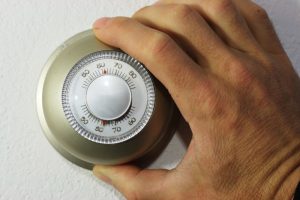 Did you know you could be hurting the efficiency of your air conditioner simply by how you’re using the thermostat? Your thermostat is essentially the brain of your entire HVAC system, so if something is wrong with it, something is wrong with your system.
Did you know you could be hurting the efficiency of your air conditioner simply by how you’re using the thermostat? Your thermostat is essentially the brain of your entire HVAC system, so if something is wrong with it, something is wrong with your system.
But we aren’t really talking about something being physically wrong with your thermostat, or the way the device communicates with your air conditioner, but rather how the way you use it causes your AC to perform, for better or for worse.
We’re going to cover a couple of behaviors that many homeowners still follow when it comes to their thermostat practices, and share with you why it’s not the best route to take.
Using an Outdated Thermostat
Do you still have a manual thermostat in your home? You know the one—they’re circular and have a little “slider” on them where you can adjust the temperature setting.
To put this simply, even an upgrade to the most basic digital thermostat is going to do you good. Plus, a thermostat replacement is pretty much the most affordable thing you can do to boost AC efficiency that will save you the most amount of money. The problem with those older thermostats is that they’re often inaccurate—off by a couple of degrees. And even that small discrepancy can have a big impact on both your cooling and heating bills.
If you’re interested in taking it up one more notch, you might like to consider a programmable thermostat, or even a Wi-Fi/Smart thermostat. These both allow you to program the thermostat to your preferences, with a Wi-Fi model learning from your past preferences and adjusting itself accordingly.
Turning the Thermostat Down as Low as It Will Go
Unfortunately, even though it seems like this would be the case, lowering your thermostat as much as it will go won’t help you get more cooling. Thermostats don’t operate like the throttle in a car does. You aren’t pushing down a pedal that makes the air conditioner “ramp up,” so to speak, and produce greater levels of cooling.
A thermostat is essentially an “on-off” switch. When the indoor temperature reaches a certain point, as designated on your thermostat settings, the thermostat turns on the compressor to start cooling your living space. When the space is cooled down to that setting, the thermostat then turns off the compressor.
Therefore, when you turn down the thermostat to its lowest setting, all you’re really doing is requesting that the compressor runs longer to reach that temperature. It isn’t a way to make the AC work faster at its job or give you better cooling levels.
“What If My Home Doesn’t Seem Cool Enough?”
If you’re turning down your thermostat because you don’t feel like your air feels as cool as it should despite the temperature setting, then there might be something else going on. For instance, you might have a refrigerant leak—refrigerant isn’t something that depletes from the system like gasoline does from a car. Rather, it is recycled through your air conditioner during its lifespan. It literally makes the cooling process possible—so if there isn’t enough refrigerant in your system, you’ll start to have problems.
Call the friendly staff at Boehmer Heating & Cooling for quality air conditioning in Baldwin, PA and exceptional customer service!


